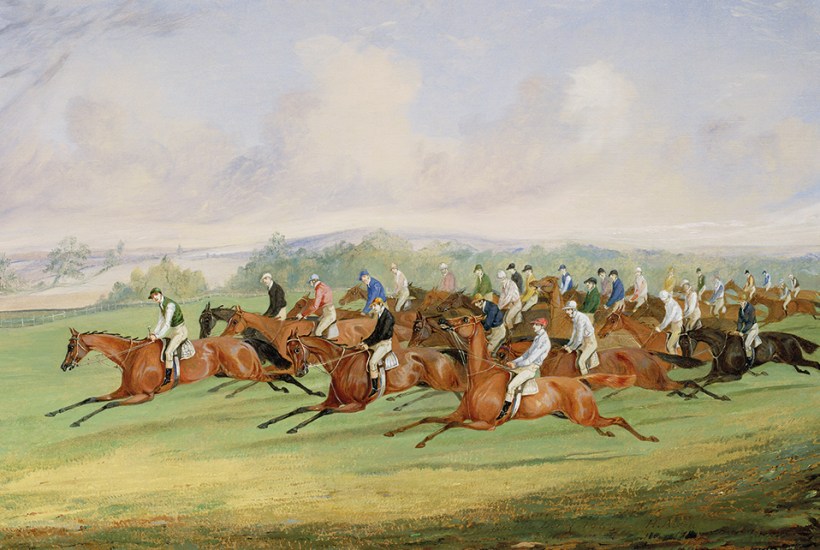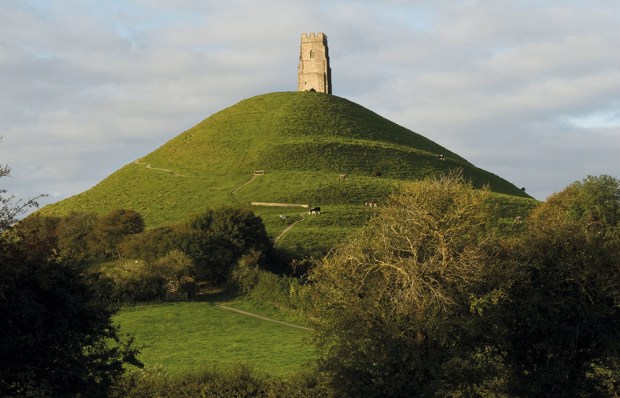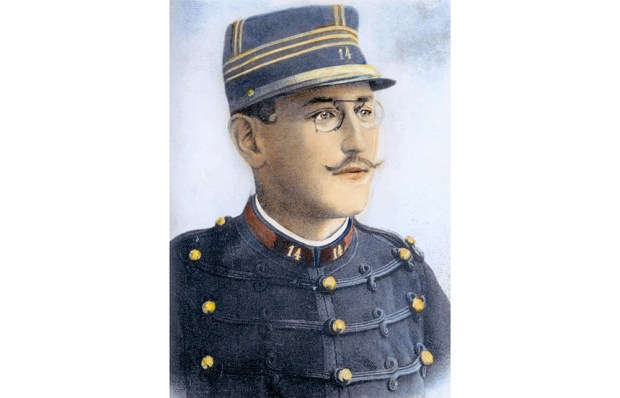Although it could hardly be less woke, the racing world is an excellent example of the diversity and inclusiveness we are all constantly urged to practise. Racecourses attract people of all classes, ages, creeds and economic status, some drawn by the spectacle, others by a love of horses or betting, and many just by the prospect of a good day out.
Nicholas Clee, a committed racegoer, clearly enjoys the latter, and has hit on the idea of taking us round the racecourses of Britain and Ireland. There are 59 in Britain and 26 in Ireland, most of which he has visited several times. En route we pick up stories of horses, jockeys, trainers, the history of the race itself and, often, the best place to watch the spectacle. This is a book for racing enthusiasts, whether course-goers or chairbound, of whom our late queen was the paramount exemplar. As her racing manager John Warren once said: ‘Every day of her life, she follows racing one way or another, when she can.’
The race everyone knows about is the Derby, possibly the most famous in the world, with a global audience reckoned at upwards of 250 million. Run over a mile and a half, it is for three-year-old colts and fillies (though the last filly entered was in 1998). It has often been more of a carnival than a race meeting, in Victorian times drawing people from all parts of the country for the sheer fun of it. There were gypsies telling fortunes, lords and ladies in their carriages, beggars, smart young bucks, flower girls, tricksters, pickpockets and Pearly Kings and Queens. As Clee puts it: ‘It was a jamboree with a horserace attached.’ Even today there are Romany women selling lucky white heather. And it was here that the great jockey Lester Piggott rode his record nine winners.
For aficionados, the most important jump meeting is the four-day Cheltenham Festival, set in a natural amphitheatre in front of the highest hill in the Cotswolds, with the Gold Cup the top race for steeple-chasers. Run over a distance of just over three-and-a-quarter miles, unlike the Grand National (a mile longer) it is not a handicap race, so the best horse wins. It was the only great sporting event to take place at the outset of the Covid pandemic – and so important is it that even speculation as to whether it would or wouldn’t go ahead generated £4 million in bets.
Racing was first recorded at Cheltenham in 1818, and the Gold Cup was inaugurated in 1924. It was its famous triple-winner Cottage Rake, trained by the equally legendary Vincent O’Brien, that really sparked today’s regular Irish invasion. But the best horse ever to win (again, three times) was probably Arkle . So supreme that he was always known by the Irish as ‘Himself’.
The Grand National was first run in 1836, when it was known as the Grand Liverpool Steeplechase, and won by the most celebrated jockey of the day, Captain Becher. When riding in the race the third time it was run, he fell at one of the fences and took shelter in the stream beneath as the other horses flew overhead – hence Becher’s Brook. Though, at 4’10”, not the highest of the National’s 16 fences, Becher’s Brook is the scariest, with its huge unseen drop on the far side. Anyone who has stood beside it and felt the tremble of the earth as thundering hooves draw near will never forget it.
The Grand National is famous not only as a race but for its calamities, as when Devon Loch, the Queen Mother’s horse, ridden by Dick Francis, and seemingly a clear winner, suddenly spreadeagled on the ground in 1956. Another disaster was when there were so many false starts that the race was declared void; a third when a pile-up at the Canal Turn left only two runners, one of which fell, leaving a 100/1 outsider to canter home victorious. Accidents, naturally, are commoner in jump races, where the jockeys themselves are taller, but it is reassuring to be told that fatalities are rare (only one jockey has been killed in the Grand National, while equine fatalities stand at just over 0.2 per cent of races run). And, for the record, a jockey’s whip is foam-padded, with no more than seven strokes allowed.
Racing is an extremely expensive business. Keeping a course in trim involves proper drainage and organic fertiliser. As for the cost of breeding a possible winner, this has skyrocketed. When Clee’s book went to press, sending a mare to be covered by Dubawi, the most prized stallion in Britain owing to the amazing successes of his progeny, cost £250,000. Now it’s £350,000 – which at least tells you something about the healthy state of British racing. A useful glossary is printed at the back of the book.
Got something to add? Join the discussion and comment below.
Get 10 issues for just $10
Subscribe to The Spectator Australia today for the next 10 magazine issues, plus full online access, for just $10.
You might disagree with half of it, but you’ll enjoy reading all of it. Try your first month for free, then just $2 a week for the remainder of your first year.














Comments
Don't miss out
Join the conversation with other Spectator Australia readers. Subscribe to leave a comment.
SUBSCRIBEAlready a subscriber? Log in